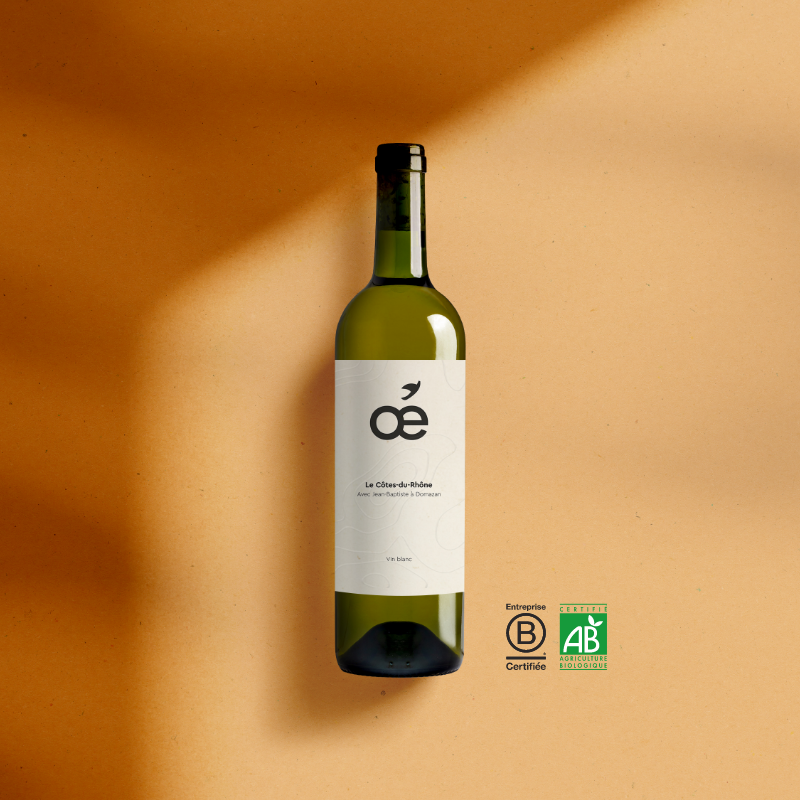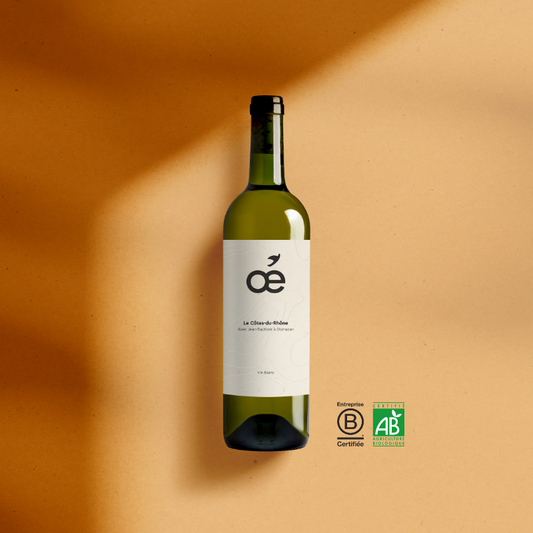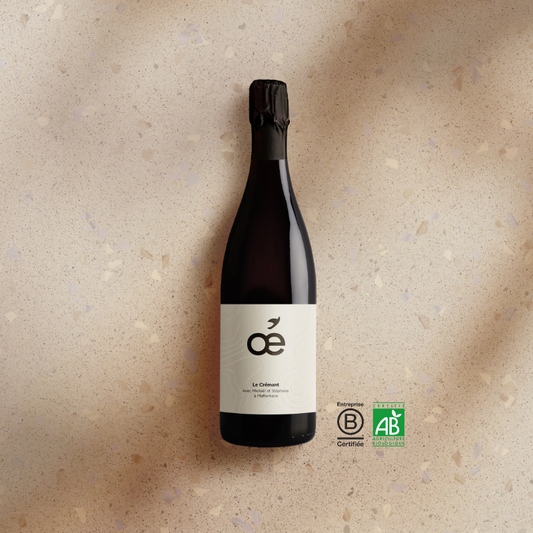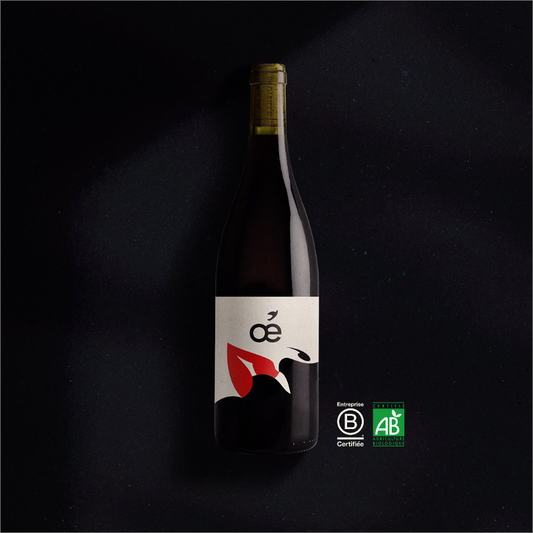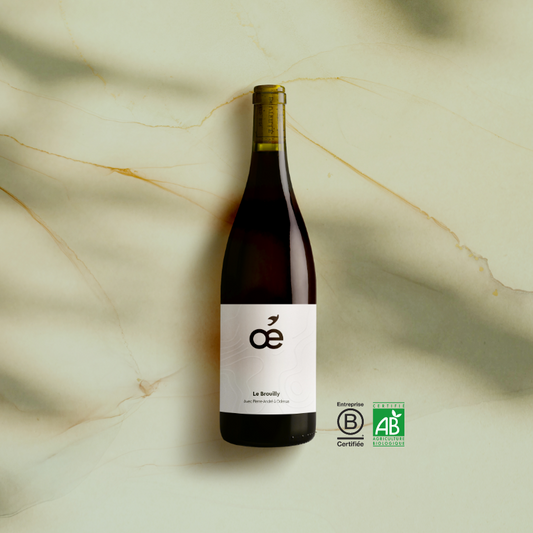The Oé team went to the La Chénou microbrewery in Orliénas to do a beer tasting with Magali and Quentin as well as their acolytes Simon and Étienne from the Caribrew brewery in Brignais . The program: learn a little more about the mysteries of beer and its production . It's no surprise that we realized that wine and beer have almost the same DNA and are made almost the same way (especially when made with love). The topo is now 😉

The composition of the beers
Beer is the incredible blend of hops (cousin of hemp), malt (cereals), yeasts and water . At this point, we don't think we'll teach you a lot ;-) but if we go into the details, we could push the vocabulary a little further. For example, malting is just as complex a skill as brewing. This consists of germinating barley, wheat (and many others such as rice, spelled, oats, rye, sorghum, etc.) into malt in order to allow the production of enzymes and of sugars needed to brew beer .
When we talk about IPA (India Pale Ale) beer , it refers to the type of malt (barley) and the type of yeast used to make it.
India = when India was an English colony, the English sent beer by boat to India. As it did not keep during the trip, the English brewed a new beer with a lot more hops (which allows the beer to be better preserved), which gave birth to IPA beer, a more aromatic and bitter beer;
Pale = type of malt; and Ale = type of craft yeast.
There are two main families of yeasts:
- Lager : yeasts which ferment at low temperature and which are generally used in light beers (German and Czech beers for example)
- Ale : yeasts that ferment at high temperature and used in more varied styles because they bring more taste and character (Belgian and English beers)
In summary and in chronological order of beer making, there are:
- The cultivation and harvesting of barley or wheat (grown in Europe: France, Belgium, Germany mainly) and hops (which comes from Europe, the United States and New Zealand). The brewers of the La Chénou and Caribrew breweries obtain their supplies mainly from Auvergne for cereals and from Alsace for hops. A single watchword: local or French sourcing.
- Malting is the transformation of barley or wheat into malt
- The yeasts are cultured in a laboratory (in Belgium for the La Chénou brewery) and are dehydrated to be better preserved before being used.
- Brewing is the mixing of hops, malt, yeast and water all together
- The tasting ! (the moment that we obviously preferred ;-))
The stages of brewing beer
To make beer, you have to go through several steps. We dissected them with Quentin from the brewery just for you:
- Crushing . Beer brewers crush the received malt into whole grain. This process takes about 30 minutes for a small brewery. The malting technique affects the quality of the grain and therefore the quality of the beer that will be in your glass a few weeks later.
- Pasting . Cracked grain is added to water between 60 and 72 degrees to release the sugar present inside the seed and expose it to the water. The mashing lasts 1 hour. The enzymes are activated by the effect of heat and break down the starch (which becomes sugar). It is this same sugar that will be assimilated by the yeasts. The hotter the “bath”, the less strong the beer will be in alcohol and the rounder it will be in the mouth.
- Filtration . The liquid is then sent to the filter tank to separate the spent grains from the must. The filtration lasts about 2 hours at the La Chénou brewery.
- Sterilization . The filtered liquid is boiled to sterilize the beer. This is when hops and fruit (if the brewer wishes to add bitterness and aromatics) are added. To sterilize the beer, it takes about 1 hour.
- Fermentation. Fermentation is done with Saccharomyces cerevisiae yeasts . At this time, the beer is cooled in the opposite direction. It goes from 100 to 25 degrees in less than 40 minutes for 600 liters of beer. The wort stays in the fermenters from 13 days to 3 weeks depending on the type of beer you want to offer and the size of the brewery. In the early days of brewing, all the sugars are converted into alcohol and C02, the beer matures and the yeasts finish working. It remains 8 days around 18 degrees.
- Clarification . On the last days, the tank is put at 1 degree so that the yeasts and impurities go down: it is the clarification of the beer.
- Bottling and second fermentation . At the end of the first fermentation (organoleptic modification and transformation of simple sugars into alcohol), the beer is bottled alcoholic but flat. To trigger a second fermentation, a sugar syrup is injected at the time of bottling to “create” bubbles. This action allows the beer to create bubbles and become even more complex.
beer stories
Wheat beer is beer made from wheat and dark beer is made from barley malt that is roasted during brewing .
The yeasts are selected according to their tolerance to alcohol and also to provide different aromatics. With the same recipe (malt, hops, yeasts) but not at the same fermentation temperature, the taste of the beer will be different.
According to the legend, there are, as with wine, beers for laying down… These are fermented one last time at low temperature in bottles of champagne or in vats to let them develop a little more and keep longer. We believe in ? Chénou, we prefer to drink it at the exit of the tank well surrounded ;-)
